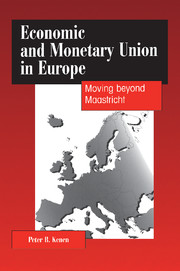3 - Monetary policy in Stage Three
Published online by Cambridge University Press: 20 May 2010
Summary
This chapter examines the monetary mechanics of EMU and the conduct of monetary policy by the ECB. It concentrates on problems stemming from the use of national currencies early in Stage Three, after exchange rates have been locked but before the ECU has replaced the national currencies.
The first topic is the future role of the ESCB in clearing transactions between EC residents. The analysis shows that national payment systems need not be merged into a single system but may be linked in various ways. Nevertheless, large institutional changes will be required to underwrite the locking of exchange rates and integrate the banking systems of the ESCB countries into a single monetary system. An analogy is drawn with the experience of the United States, where the clearing of transactions between banks in different Federal Reserve Districts results in transactions between the Federal Reserve Banks themselves.
The chapter then turns to the techniques of monetary management currently used by EC central banks and the changes that might be needed in Stage Three of EMU. It also considers the targeting of monetary policy. Should the ECB focus entirely on managing interest rates or be concerned with monetary aggregates as well? Monetary aggregates may matter more after the ECB is established, because the ECB will have tighter control over the total money supply of the ESCB countries than most EC central banks currently have over their own national money supplies.
- Type
- Chapter
- Information
- Economic and Monetary Union in EuropeMoving beyond Maastricht, pp. 44 - 79Publisher: Cambridge University PressPrint publication year: 1995



